Choosing an Accounting System for your Small Business
With so many different accounting software products on the market, how do you go about choosing an accounting system for your small business?
This article will help you choose a system to make it easy, cost-effective and as painless as possible.
Lets start with 5 tips:
- First you need to consider the complexities of your business alongside your own accounting abilities. If your abilities are limited, the next best step you can make is to speak with an accountant who can help you choose.
- Look at the cloud based options that will suit your business. Some are better suited to companies needing to keep a close eye on inventory and others are more suitable for businesses with staff needing to record their time, etc.
- Keep your budget in mind however, also remember that getting everything setup correctly from the start will undoubtedly save you time and therefore money fixing things up in the future. Do it once, do it right!
- Think about scalability. Your software needs to be able to grow with your business. There are many add-ons available that will integrate your accounting software with your online store or front of house software.
- Engage a trusted accountant to help you get setup and give you the necessary training to get going. Businesses who don’t focus on getting things right from the outset risk all sorts of issues – including meeting their tax obligations and staying on top of them!
Your accounting system should work for you!
At a minimum, it collates your income and expenses for your tax returns. Ideally, it also provides valuable, at-your-fingertips information to help you understand and improve your business results.
Below in our article:
What will your approach be to choosing an accounting system for your business ?
- Do it or Delegate it?

- The No Accounting Software Business
- Cashbook Software
- Full Accounting Package
- Advanced Accounting Requirements
- Management Information and Reporting
We also provide information about the different Accounting Software Packages on the market.
If you’d like our help to go through your options, feel free to get in touch.
Do it or Delegate it
First, decide if you are a DIY accountant or not. Do you enjoy working with numbers, are good at managing finances, and want to spend time on them? If you answer no to any of these, you should probably get help.
There is no bigger productivity or joy killer than tearing your hair out trying to balance your books. There are plenty of people who love that stuff and will do it efficiently and cost-effectively while you spend your time making money.
Whether you choose to do it or delegate it, you need to choose a system for your business.
The No Accounting Software Business
The simplest businesses can operate without accounting software. Bank statements, a manual cashbook or excel spreadsheets can provide the data for GST and income tax returns. Invoices can be prepared on word documents or excel.
If your transactions are few and uncomplicated, this may work for you. However, as your business grows, complications grow and mistakes creep in. Consider starting with a system that will grow with your business.
Cashbook Software
The first step may be a cashbook system.
You use a cashbook system to track and code your receipts and payments. Your invoices for credit sales and purchases must be managed separately. If you’re a contractor with minimal expenses, sending out just a handful of monthly invoices, a cashbook may suffice.
If you’re GST registered on a payments basis – the most common method for small businesses – your cashbook software will handle your GST returns. Your cashbook data, combined with your manual sales and purchases invoice lists, provide the raw data for your financial statements and income tax returns.
Full Accounting Package
For a more comprehensive solution, choose a small business accounting package. These typically handle cash transactions, sales invoices and purchases invoices. They often also handle inventory, project management, payroll and other tasks.
If you process more than a few invoices and a couple of pages of monthly bank statements, you probably should have a full accounting package.
Advanced Accounting Requirements
If your business has specific or complex needs, you may need more specialised software. This will usually mean either an industry specific package, say that tracks stocks of components for repairing machinery, or software for specific functions such as project management, customer relationship management (CRM) or inventory tracking.
Management Information and Reporting
Processing transactions to satisfy IRD is just the start. You need relevant information to make effective business decisions. With your data already collated in your system, you can see your financial performance results with a few mouse clicks. Unfortunately, people often spend significant time and effort processing transactions, then file their GST return and forget it. With minimal extra effort, they can empower themselves to build a better business.
Nearly every accounting system has built in reporting including the two primary financial reports – the Profit and Loss (P&L) and Balance Sheet.
Profit & Loss
Your P&L shows your business’ financial performance — how much money you’re generating, how much you’re spending to generate it, and the profit left over for you. Presuming you want to make money, it would be crazy to not review your Profit and Loss at least monthly.
Balance Sheet
Your Balance Sheet shows your business’ financial position – how much it owns in assets, how much it owes to outside parties, and the surplus left over for you, the owner. With small business being so vulnerable and risky, it would also be crazy to not monitor the financial health of your business.
Even a cashbook system will produce these reports but, unless you have no credit transactions on credit, you must adjust for outstanding sales and purchases accounts for a true financial picture. Depending on your business, you may also need adjustments such as for inventory values and depreciation of fixed assets.
Including outstanding debtors (money owed by customers) provides a true figure recognising revenue generated regardless of whether the invoices are paid. Likewise, including outstanding creditors (money owed to suppliers) provides expenses actually incurred. A cash-only result can mislead and bury the true story.
As well as the P&L and Balance Sheet, your system may provide many other useful reports including a breakdown of your debtors and creditors, and cash flow analyses.
To effectively manage a business, you need a basic understanding of your financial reports. See our Understanding Financial Statements articles for an introduction.
Accounting Software Options
Small business accounting software options in New Zealand include MYOB, Xero, Reckon, Moneyworks, Accomplish Cash Manager, QuickBooks and others. You can buy a desktop-based system for a one-off cost, and maybe ongoing support and upgrade fees, but the trend is towards subscription based online systems with no start-up cost.
I am not an expert on all these systems, or objective, but my favourite is Xero. We are a Xero practice, so I will use it as an example.
Xero is a New Zealand technology business success story, attracting investment and spending heavily on ongoing development. Xero is a modern system built specifically as a cloud accounting system. This means no software updates, different versions, duplicate data files or back up issues for the user. Everything is sorted behind the scenes.
You can invite whomever you like into your ledger such as your accountant, bookkeeper and staff, and control their access rights.
There are cheaper options than Xero and some people dislike ongoing subscriptions. However, considering how intuitive and easy to learn and use Xero is, when you value your time, the overall economics compares well with other options. Having previously been a consultant and trainer of another popular program, teaching clients to use Xero is a breeze in comparison.
From an accountant’s point of view, I prepare clients’ annual accounts in the same Xero datafile that the client uses. The old model meant extracting the client’s data, re-inputting it into my system, processing financial statements, then adjusting the client’s system to match mine. That process can add about 25% more time to the annual accounts job.
Also, I can help a client far more effectively when we are both looking at the same, live data.
Xero Options
While Xero is one software program, you can unlock more features depending on your subscription choice. It’s easy to use and user friendly.
Cashbook Edition
A Xero cashbook option is available via Xero partners including accountants and bookkeepers, for around $25 per month. This includes bank feeds, meaning your bank transactions are automatically fed into the system daily, ready to be coded.
Standard Edition
Currently $60/m, the Xero standard edition includes bank feeds and handles your debtors and creditors. It also includes basic inventory, tracking for different projects etc and many other features. If you want a full accounting package for a service business, this may be your best option.
Premium Edition
At $75/m, the Xero premium edition is the standard version plus handles multiple currencies. If you invoice in US$ for example, or hold foreign currency bank accounts, this is the package for you.
Additional Features
For additional cost, you can unlock additional features within Xero. This includes payroll for staff on PAYE, and a projects module to track your time and expenses against specific projects. Payroll costs $10/m for one employee and $1/m for each additional employee. Projects is $10/m for one user and $7/m for each additional user.
Personally, I use and prefer another payroll system called Smart Payroll, but Xero payroll has developed since I last used it.
Add-Ons
For specific needs that Xero does not handle, you can buy add-on software. Xero has a marketplace of apps from independent developers. Most are cloud based and integrate with Xero, seamlessly transferring data between the two systems avoiding duplicating input.
For example, an architect who wants a more comprehensive analysis of project time, expenses and profitability than Xero Projects provides, could choose WorkflowMax, a project management solution.
Your Solution
You will likely need an accounting package plus some sort of Practice Management system to run your business. Your software choice will depend on the complexity of your operation and the output you want from your software. All systems have their strengths and limitations.
Next Steps
We are experts at analysing businesses and putting together customised strategic plans.
If you need our help, please feel free to get in touch.
Did you find this article useful?
Please share this content using the social icons below and Sign Up to our mailing list to receive regular newsletters and information on relevant topics.
